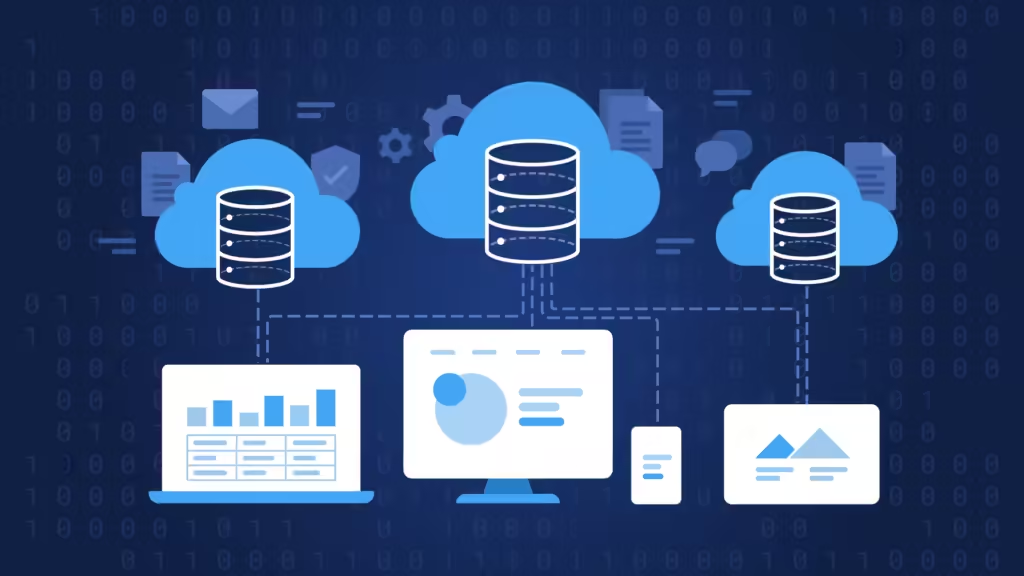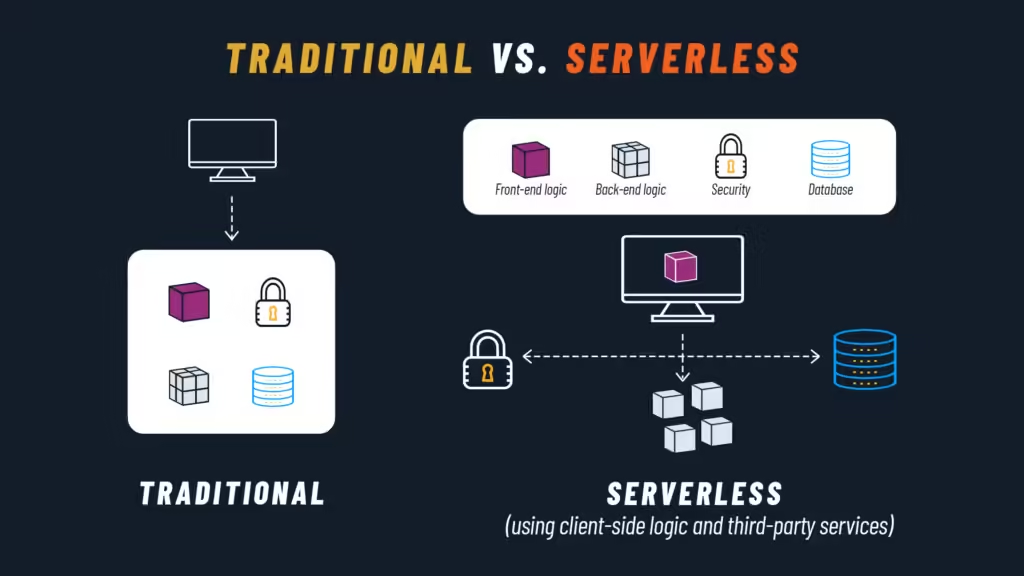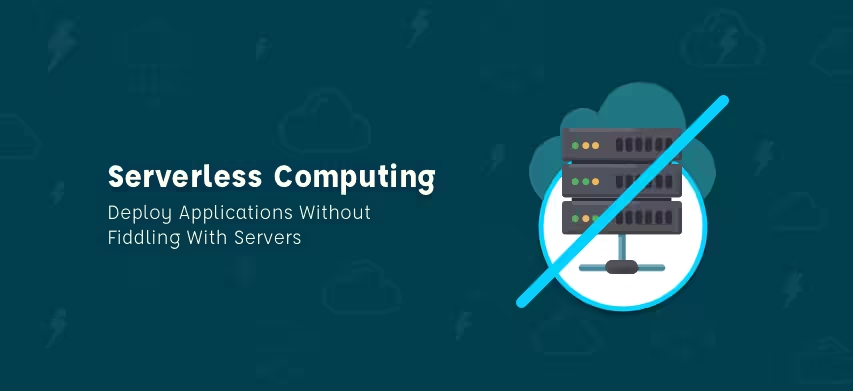In 2024, serverless architectures are emerging as a pivotal technology trend for web developers, providing flexibility, scalability, and cost-effectiveness in building modern applications. The rise of serverless architecture has reshaped how developers approach infrastructure, allowing them to focus more on writing code and less on managing servers. With advancements in cloud computing and the increasing demand for high-performance web applications, serverless is positioned as the next big thing in web development.
In this blog post, we’ll dive into what serverless architecture is, why it’s gaining traction in 2024, and how web developers can leverage it for building modern web applications.
What is Serverless Architecture?
Contrary to its name, serverless doesn’t mean there are no servers involved. Rather, it refers to a cloud computing model where the cloud provider automatically manages the infrastructure, including scaling, provisioning, and maintenance of the servers. Developers simply upload their code, and the cloud provider runs it in response to specific events or requests.
Popular serverless platforms include:
• AWS Lambda
• Google Cloud Functions
• Azure Functions
• Cloudflare Workers
With serverless architecture, you only pay for the resources your application uses, eliminating the need for pre-provisioned servers, and making it an efficient and cost-effective solution for scaling web applications.
Why Serverless is Taking Over in 2024
1. Cost-Efficiency and Pay-as-You-Go
Serverless platforms operate on a pay-per-use model, meaning you only pay for the time your code is actually running. This differs from traditional server hosting, where you’re charged for the infrastructure whether it’s being used or not.
In 2024, as web applications become more dynamic and resource-demanding, serverless allows companies and developers to significantly reduce their operational costs, especially for applications with unpredictable traffic patterns.
• Example: A website might experience sporadic spikes in traffic during product launches or marketing events. With serverless, resources automatically scale up to meet demand and scale back down during low-traffic periods, minimizing costs.
2. Automatic Scaling
One of the biggest advantages of serverless is automatic scaling. As traffic to your web app grows, the serverless platform automatically scales the resources required to handle the increase, ensuring that your application can handle massive spikes in traffic without any downtime.
In 2024, with the rapid growth of e-commerce and content-heavy web apps, serverless allows web developers to build resilient applications that can handle global traffic without worrying about infrastructure scaling.
• Key benefit: Developers no longer need to manually configure load balancers or adjust server capacities. Serverless platforms adjust resources in real-time.
3. Focus on Code, Not Infrastructure
By removing the need for server management, developers can focus on writing high-quality code without worrying about provisioning or maintaining infrastructure. This leads to faster deployment cycles, reduced operational overhead, and more time to innovate.
For web developers in 2024, this shift is crucial as modern development demands agile workflows, continuous integration (CI), and deployment (CD). Serverless enables rapid prototyping, testing, and deployment, allowing developers to move at the speed of innovation.
• Practical use case: Serverless architecture is ideal for microservices-based applications, where different parts of the application can be independently developed, deployed, and scaled without affecting other components.
4. Enhanced Developer Productivity
Serverless is built for modern developer workflows. With no server configuration required, web developers can focus on building features and improving user experience rather than maintaining infrastructure. Serverless also integrates seamlessly with development tools like CI/CD pipelines, GitOps, and cloud-native services, further boosting productivity.
By leveraging serverless, developers in 2024 can reduce the time spent on operations, reduce deployment friction, and enable faster feature releases.
5. Improved Application Security
Security is a growing concern in web development, and serverless offers a robust solution by offloading many security responsibilities to the cloud provider. This means developers can rely on built-in security features like automatic updates, patch management, and secure network configurations that the serverless platform provides.
In 2024, with the rise of cyber threats, web developers can benefit from serverless’ security advantages, including:
• Isolation of functions: Each serverless function runs in its own isolated environment, reducing the attack surface.
• No direct server access: Since there are no servers to manage, there’s less risk of attacks targeting server misconfigurations or vulnerabilities.

Best Practices for Using Serverless Architecture in 2024
1. Design for Event-Driven Architectures
Serverless functions are event-driven, meaning they are triggered by specific actions like HTTP requests, database updates, or file uploads. To fully harness the power of serverless, web developers should design their applications around this event-driven model.
• Best practice: Break your application into small, independent functions that handle specific tasks, such as image processing, user authentication, or database queries. This modular approach ensures better scalability and maintainability.
2. Optimize Cold Starts
One common challenge with serverless is cold starts, where a serverless function takes longer to execute due to the need for initial setup. This can lead to increased latency, particularly for applications with low but infrequent traffic.
In 2024, serverless platforms are addressing cold starts with features like provisioned concurrency (on AWS Lambda) or warm starts. Developers should take advantage of these options to reduce latency for critical functions.
• Optimization tip: Use smaller, lightweight functions to minimize the impact of cold starts, and leverage caching strategies to store frequently accessed data.
3. Monitor and Optimize Costs
While serverless is cost-effective, it’s still important to monitor usage and optimize costs. In 2024, serverless platforms offer detailed monitoring tools, allowing developers to track function execution times, memory usage, and error rates.
• Best practice: Regularly review serverless function performance metrics and optimize resource allocation. Consider setting function timeouts and leveraging lower-cost storage options for non-critical data.
4. Use Serverless for Backend and Frontend
Serverless architecture isn’t limited to backend processes. Developers in 2024 can also use serverless to handle frontend functions, such as dynamic content generation, image optimization, and form submissions.
• Example: Use AWS Lambda or Cloudflare Workers to generate dynamic HTML on the fly, perform real-time calculations, or respond to user input without needing a dedicated server.
5. Leverage Edge Computing with Serverless
Edge computing is gaining momentum as serverless functions can now run closer to users at edge locations around the globe. This reduces latency and improves performance for web apps with global user bases.
In 2024, web developers can combine serverless and edge computing to build fast, scalable applications that deliver a seamless experience to users no matter where they are located.
• Real-world scenario: Use Cloudflare Workers or AWS Lambda@Edge to deliver content from the nearest server to the user, speeding up web page loading times and reducing the load on central servers.

The Future of Serverless in Web Development
As serverless technology evolves, it’s poised to become a critical component of web development in 2024 and beyond. The combination of cost-efficiency, scalability, and ease of use makes it an attractive option for developers building modern applications that need to respond dynamically to user demands.
Serverless also supports the growing trend of microservices and event-driven architecture, making it an ideal choice for modular, flexible applications. With continuous improvements in serverless platforms and the integration of AI and machine learning services, the potential for building innovative, powerful web apps is limitless.
Conclusion
As web development trends evolve in 2024, serverless architecture is taking center stage. By adopting serverless, developers can build scalable, cost-effective applications without worrying about infrastructure management. From automatic scaling and security enhancements to the ability to focus on code, serverless offers a range of benefits that make it the next big thing in web development.
By following the best practices outlined in this post, web developers can unlock the full potential of serverless in 2024, delivering high-performance applications that are agile, secure, and future-proof.

